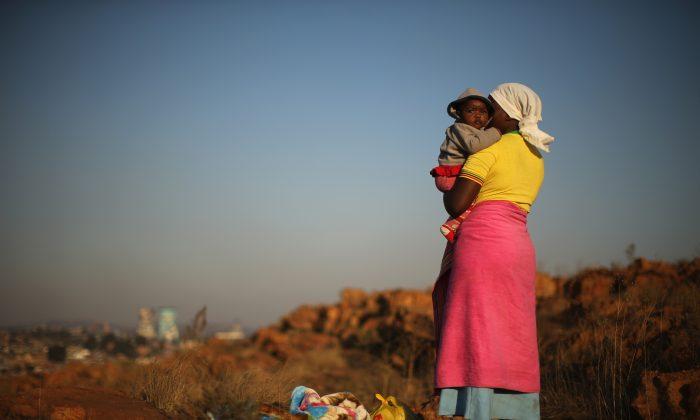I stood knee deep in dilemma on the banks of the Fish River, trying to reconcile the death threats being hurled my way. My students were from Soweto where violence had reigned supreme for decades and death threats were a daily occurrence.
I was only trying to teach the township youth of South Africa’s “Lost Generation” to canoe, which would in theory transform their lives. Yet to them, I was the “Boer”—the oppressor—so in solidarity the 12 were threatening to kill us. We didn’t know what they wanted, and in observing the mounting hysteria it appeared that neither did they.
I arrived in South Africa in 1994 after Nelson Mandela and the ANC came into power in South Africa’s first universal democratic election. My impressions of South Africa were formed by the mainstream media, with stories of riots in the streets and tanks streaming into the townships. I also had a euro-centric cultural paradigm that I saw the world through, yet, in that respect, I had one saving grace—I had grown up next to a First Nation’s reservation.
Apartheid is Afrikaans for “apart-ness”. In the 1950’s the National Party came into power with the intention of implementing Apartheid. When researching models of segregation, the Party sent delegates to North America to look at Indian reservations. This was the same era that native children were actively being taken from their communities and sent to residential schools.
Apartheid led to the relocation of African people to Homelands and Townships, resembling reservations. As resistance rose, the imprisoned Nelson Mandela became the chief icon of the Struggle, as the fight to overturn Apartheid was known. A militant police state reaped profound economic gain from the abundance of mineral resources in South Africa, largely diamonds and gold.
Tremendous disparity existed between black and white. Third-world conditions of poverty neighboured first-world affluence. Townships like Soweto, outside Johannesburg, centralized cheap labour on which the economy was built.
In 1976 the government legislated that all education be taught in Afrikaans. Most black youth boycotted education and learned about petrol bombs, Ak-47’s, and the trance of the toi-toi (war dance). Heavily armed police made militant raids into townships, and violent outbursts exploded like wildfires in dry grass. A generation wound up in angst, tightly-coiled and ready to strike. Soweto, the largest township, was the epicentre of violence, and the youth I was being threatened by were former MK militia, foot soldiers of the Struggle.
Standing by the Fish River I spontaneously became aware of what was happening. Growing up next to a reservation in B.C., I was familiar with the socio-economic differences that accompanied segregation, as well as the resulting tensions. It was part of our everyday reality at school. In that moment I drew the parallel between Apartheid and Indian reservations. Our own Apartheid.
The Soweto youth were afraid of the water. Their solidarity, which spiraled down to death threats, was a politicized response to gaining control.
I began to negotiate. “I came all the way here from Canada, to the opposite side of the earth, to teach you how to canoe, not to be threatened or to fight. In Canada, the indigenous people canoed on the ocean, lakes, and rivers like this one before the white man came. I came to teach canoeing because canoeing to Canadians is like dancing is to Africans.” They began to chuckle, likely at the thought of me dancing. “In fact, I’ll only teach you how to canoe on one condition,” I continued, “a cultural exchange. I teach you to canoe and you teach me how to dance!”
Smartass salvation. But it worked. The women began to dance, and whenever the women danced the men were soon to follow. We spent the rest of the day learning to canoe.
We then gathered wood from thorny acacia trees to kindle a fire. Coolers, buckets, pots, pans, sticks, and a hollow log became an improvisational percussion ensemble to summon the spirits of dance. Tribal harmonies came with twilight merging into night; the fire cast a luminous glow over everyone, and magic happened. Schooled in various ways to wiggle the butt and let go of limbs and inhibitions, we met in laughter and joy. We danced through to dawn learning how to release the mind and tune the body to the essence of sound, an experience life-altering and profound.
I still lament the lingering knowledge that the roots of Apartheid were deeply tapped into the reservations of my homeland. But I continue to revel in how that group of Soweto youth had in one moment threatened to kill me, then welcomed me into ceremonial dance, initiating me with their cultural songs. It was during that nebulous night of sparks and embers rising from the central fire that I learned first-hand about releasing the coiled snake—umbiliniin Zulu—summoning cultural insight still burning strong.
Recently I limbered myself into dancing at a gathering of First Nations. The archetypal drum beats transplanted me back to the Fish River amidst a Salish song. The dance was vastly different but the fundamental truth that it summoned was virtually the same. You can legislate and propagate cultural segregation, condone inequity, and tolerate hate; but you cannot take away a culture’s song.
Lee White is a Senior Advisor with GMG Consulting (Good Medicine Group), which works with aboriginal communities and organizations, as well as government and resource-based industries, to support aboriginal self-determination. Courtesy Troymedia.com

Friends Read Free